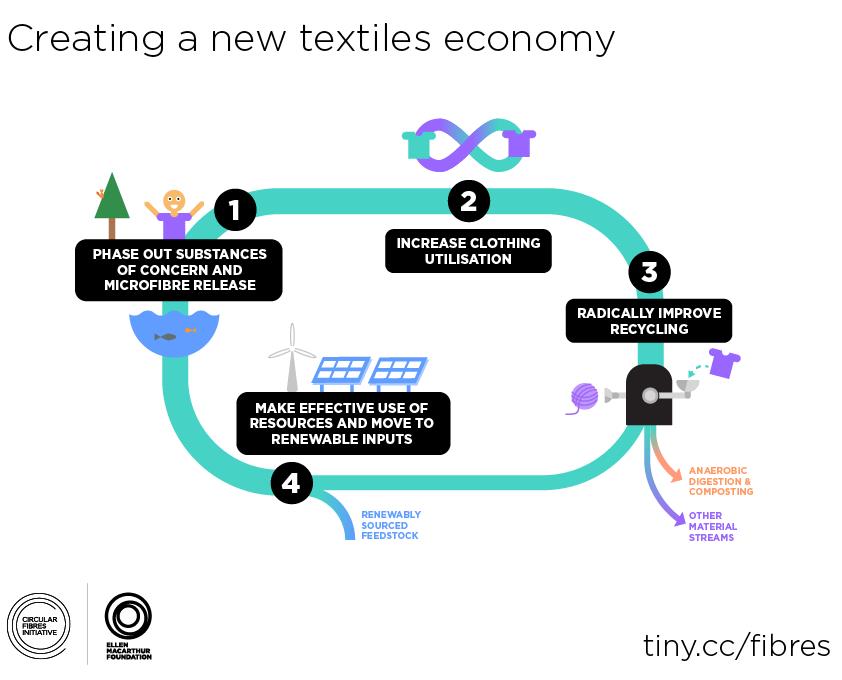Stella McCartney and Ellen MacArthur have partnered to launch a revolutionary report which urgently calls for a new, shared vision for a circular fashion industry, in order to eliminate environmental externalities

If the current linear production model stays the same, it is estimated that by 2050 the fashion industry will be using 25 percent of the world’s carbon budget and every year an equivalent of 50 billion plastic bottles of microfibers will be released into the oceans, polluting the ecosystem and entering the food chain.
The “A new textiles economy: Redesigning fashion’s future” report argues that the current fashion industry model is the root cause of many environmental impacts and substantial economic value loss. The report highlights that the equivalent of one garbage truck of textiles is landfilled or burned every second.
This amount of textile waste represents a loss in value of $500 billion every year; large amounts of non-renewable resources are extracted to produce clothes that will often be used for a short time and end up in the landfill due to low recycling rates and underutilisation of garments.
If the current linear production model stays the same, it is estimated that by 2050 the fashion industry will be using 25 percent of the world’s carbon budget and every year an equivalent of 50 billion plastic bottles of microfibers will be released into the oceans, polluting the ecosystem and entering the food chain.
The new report envisions a future where clothes are designed to last longer, don’t contain harmful substances and are widely

The first main recommendation encompasses the creation of safe material cycles that eliminate substances of concern to enable large-scale recycling and drastically reduce plastic microfibre release.
To eliminate waste disposal, higher quality clothes are needed. New business models will also help shift the perception of clothing from being a disposable item to being a durable product.
One example of how this can be achieved is to seize short-term clothing rental business opportunities.
The report points out that in order to increase recycling rates a number of new measures, including a combination of both demand and supply-side responses will be required.
Companies will need to align the clothing design and recycling processes, pursue technological innovation to improve the economics and quality of recycling, stimulate demand for recycled materials and implement clothing collection at scale.
The report argues that virgin raw materials will always be needed despite any future reduction in the use of resources. This is why companies should aim to increase the use of renewable inputs, using, for example, renewable feedstock for plastic-based fibers.
Ellen MacArthur explained that “today’s textile industry is built on an outdated linear, take-make-dispose model and is hugely wasteful and polluting”.
Stella McCartney, fashion designer said: “What really excites me about this report is that it provides solutions to an industry that is incredibly wasteful and harmful to the environment”.
She added: “It opens up the conversation that will allow us to find a way to work together to better our industry, for the future of fashion and for the future of the planet”.
The report was created by the Circular Fibres Initiative , part of the Ellen MacArthur Foundation - a platform aiming to bring together key fashion industry stakeholders to create a sustainable model for textile use, which was launched this






